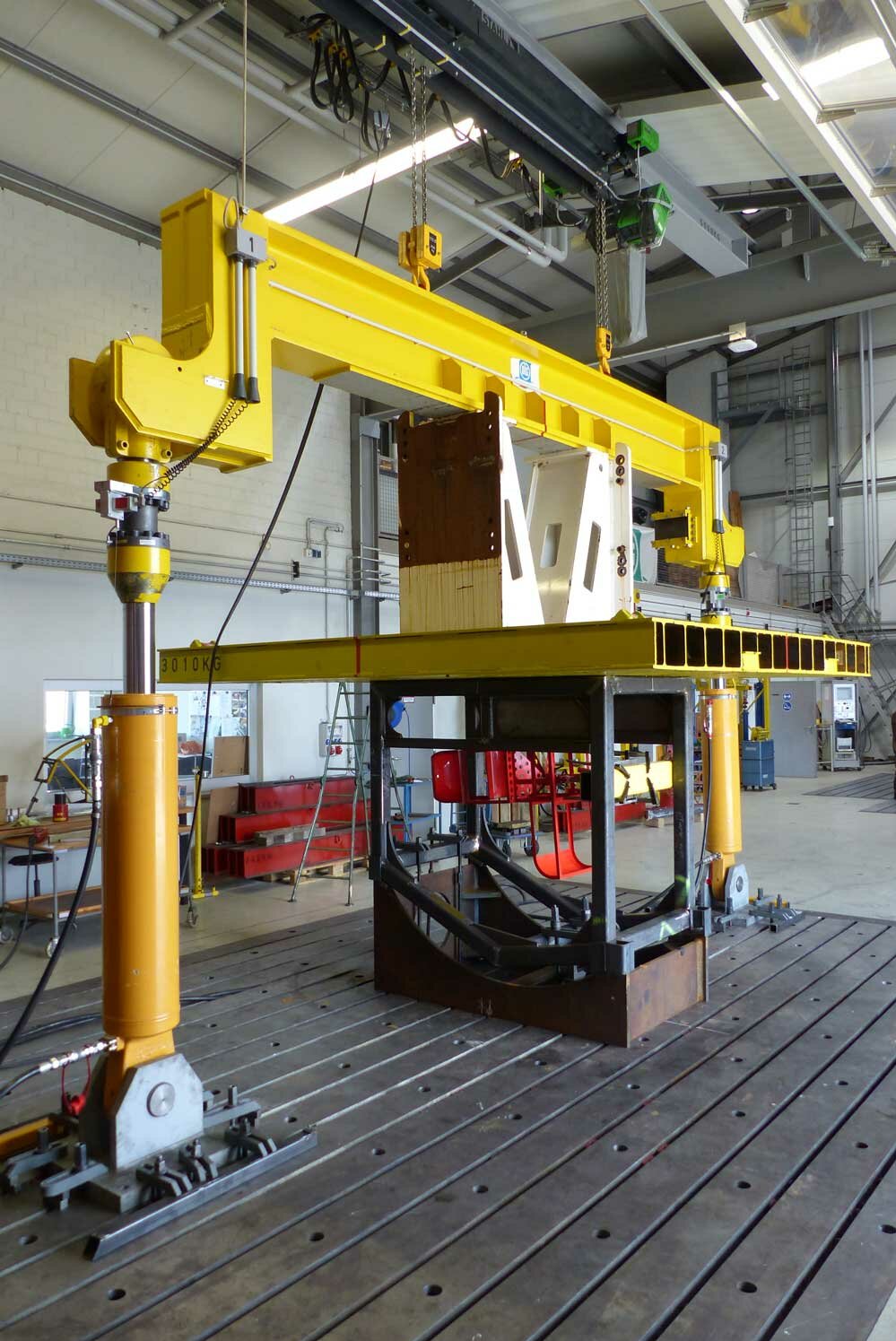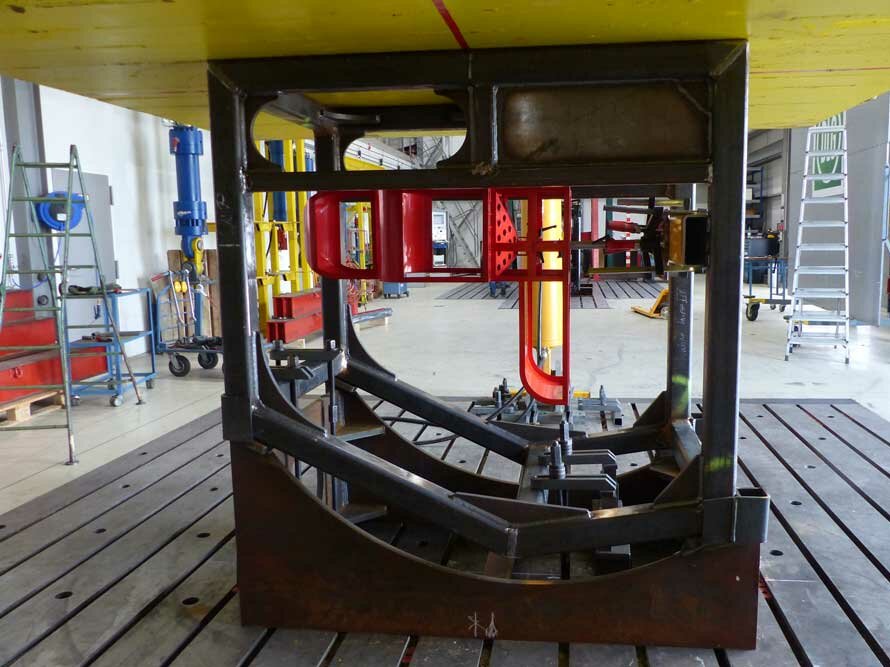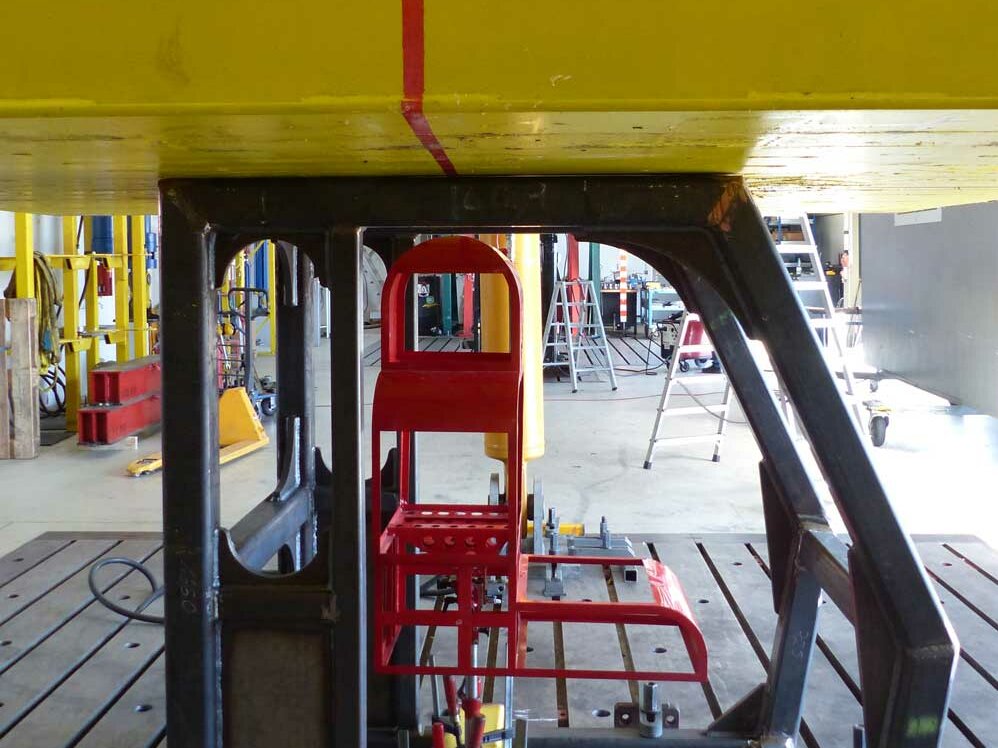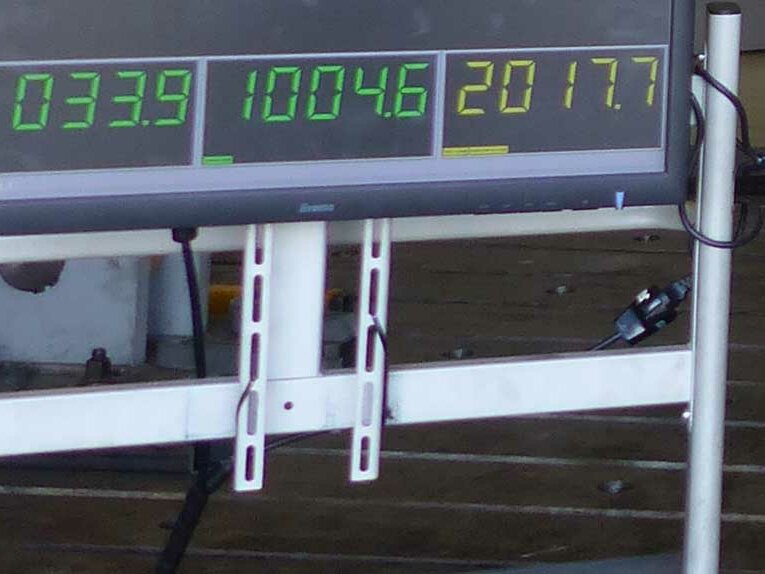Self-propelled machines - Driver safety first
Thilo Keunecke and Maik Dubielski, DLG Test Center for Technology and Farm Inputs
100 tonnes are hard to imagine. An average blue whale is so heavy that hardly anyone has ever seen an entire one. OK, a typical diesel locomotive of the 218 series weighs just under 80 tonnes, and a fully loaded juggernaut is on the road with 40 tonnes. In the construction machine sector, designers can only smile weakly about such considerations. Whether for mobile cranes or, as in the current example, a piping and drilling machine from the specialist for special machines in Edewecht, Germany, Heinz Petry Maschinenbau GmbH, high machine weights are by no means uncommon. If the survival space for the operator of a machine with a machine weight of 100 tonnes is to be designed or even tested, some careful consideration is required at the manufacturer and the testing service provider.
Testing follows use
First of all, there is hardly any leeway when planning a cabin test. How the survival space for the driver or machine operator is to be measured, is specified in the globally valid standard ISO 3164. To put it briefly, here a dummy is defined all around the seat index point (SIP) which, even in case of deformation of the protective device, may only yield, i.e. be tilted, by a maximum of 15°. Here the SIP represents a geometric reference point, which results from the point of intersection of the upper body axis and the thigh axis on the vertical plane through the centre line of the seat. The same applies to the test for protection against falling objects (Falling Object Protective Structure, or FOPS for short) and the roll-over protection (Roll Over Protective Structure, or ROPS for short). Here it is specified in the ISO standards 3449 and 3471 how a corresponding test is to be conducted and what minimum forces or energies the safety structure must absorb. When planning the test, a hazard evaluation of the manufacturer is also included. For example, for the FOPS tests it must be defined whether the protection against smaller objects, e.g. bricks, small lumps of concrete or hand tools, is sufficient, or – as in the case of heavy construction and forestry machines – protection against heavy loads caused by boulders or trees must be provided. For the ROPS tests, at least an anti-trap protection for a driver secured with a belt must be achieved if the machine rolls over 360° at a speed between 0 km/h and 16 km/h on a hard surface with a maximum 30° inclination in the rolling direction. Here it is important to know that the mechanical connection, bearings or screwed connections between the machine itself and the cabin are usually also checked according to the regulations named.
Immense forces, special hazardous situation
However, in the specific case of the cabin for a 100 tonne piping and drilling machine from Petry, on which a long digger derrick for introducing reinforced concrete foundation piles is mounted on an undercarriage, the manufacturer's hazard evaluation in consultation with the DLG test engineers showed that a) a 360° roll-over is highly improbable and b) if the machine tips over or rolls over, it is safer for the driver if it machine continues to move without the driver and his/her protective cabin structure. An additional complication would be that a stable connection between the frame and the cabin could hardly be designed. The dimensions of the screws and the thrust bearing sections would have to be much too large. The cabin was therefore designed as a tear-off cabin, which is why the test was conducted according to variation defined in the European standard EN-474 Part 1, Appendix D. In the case named, the cabin structure had to withstand a vertical load approximately equal to double the machine weight of 100 tonnes. This force of approximately 2,000 kN is also approximately equal to the maximum load which the cabin test bench at the DLG Test Center can apply in the vertical direction. Added to this are approximately 1,500 kN (approx. equal to 150 tonnes) with which a cabin can be loaded horizontally, i.e. in the longitudinal or lateral direction.
Testing expertise of DLG
Even if the DLG Test Center is the only OECD testing laboratory within the 26 member countries to have such a high-performance test bench, 100 tonnes of machine weight is anything but commonplace for the DLG test engineers. However, at least they need not fall back on special test benches for railway construction etc., which would still also have to be especially converted to construction machines at great expense before the test. This is namely the case for other test service providers, which are also designated as a technical service by the German Federal Motor Vehicle and Transport Authority (KBA) and are certified as a test laboratory according to ISO 17025. In Groß-Umstadt special customers like Heinz Petry Maschinenbau GmbH also benefit from the expertise gained from approximately 200 ROPS and FOPS tests per year. Approximately one-third of these tests are conducted on tractor cabins and two-thirds on construction machines, forklift trucks and special machines for use underground. Here a solution and customer-oriented testing approach with extensive consulting services before the test regularly ensure that an extensively tested cabin safety structure is used on series-production machines. These cabins not only meet the requirements for driver safety, they also take the physical limits of design into account.
There's no such thing as 100 % protection
With the diverse possibilities available today for simulating the effects of a large number of imaginable accidents or for deriving the requirements for the structure of a machine cabin from them, the current test standards offer a high level of safety for the driver. And last but not least, the number of fatal accidents today has decreased considerably compared to the past for this reason. Nevertheless, we should always keep in mind that during the simulations and practical FOPS and ROPS tests, it is not possible to reproduce every eventuality, and as a result there is no such thing as 100 percent safety. This is particularly true for the extreme forces generated during especially serious accidents, e.g. in case of a multiple roll-over.






